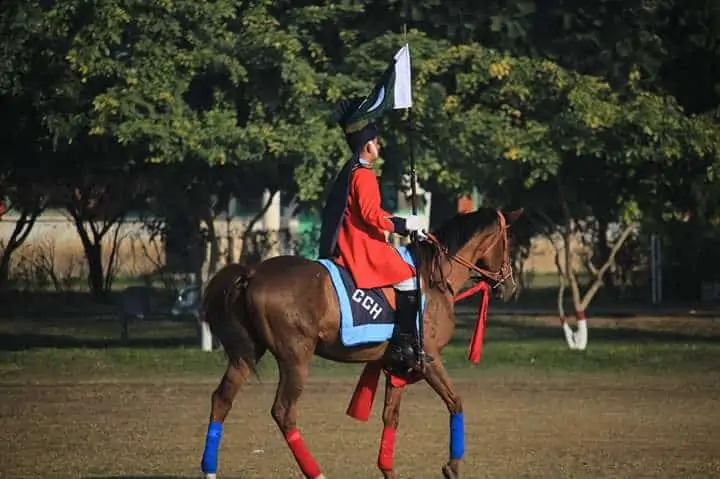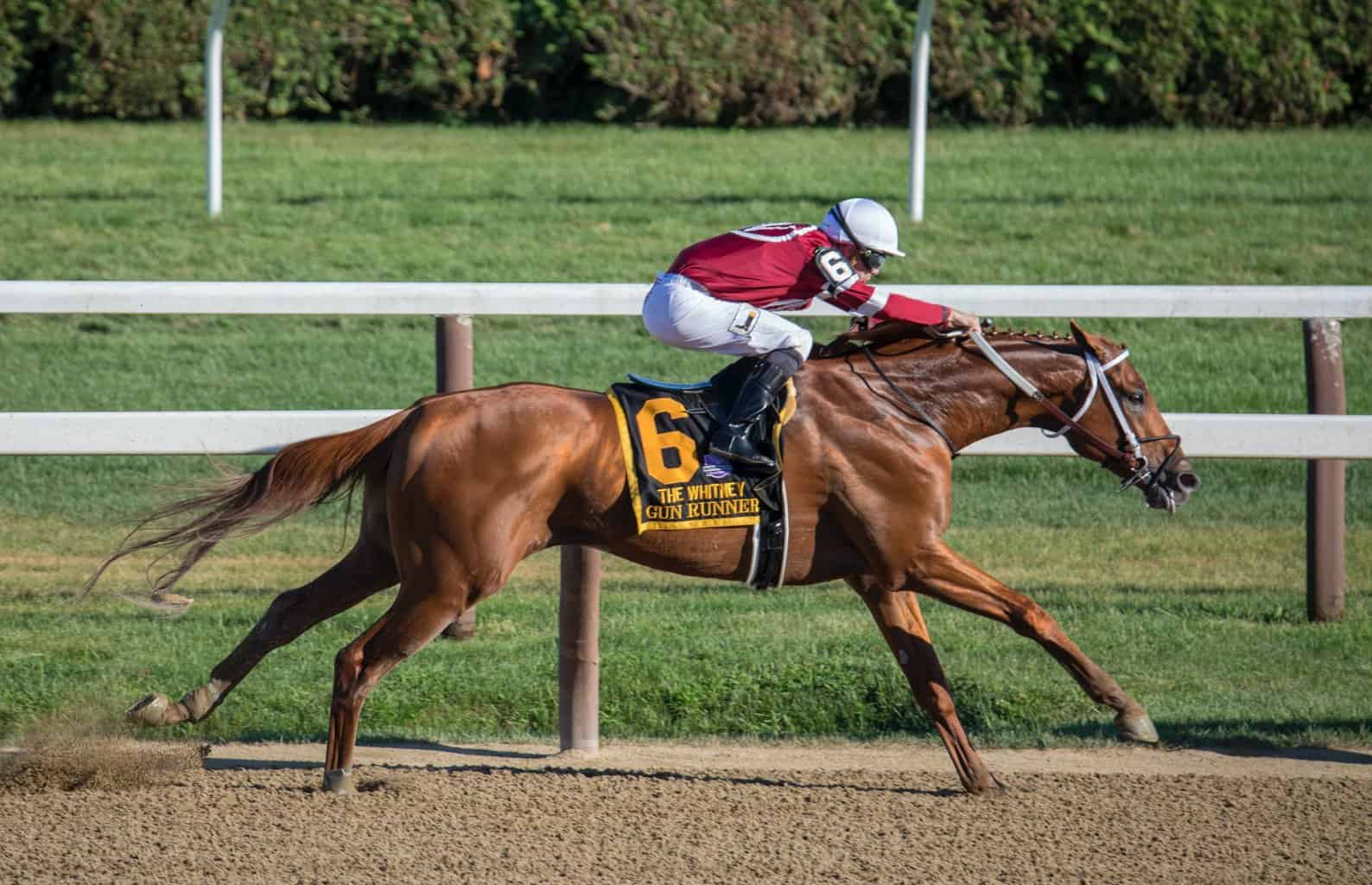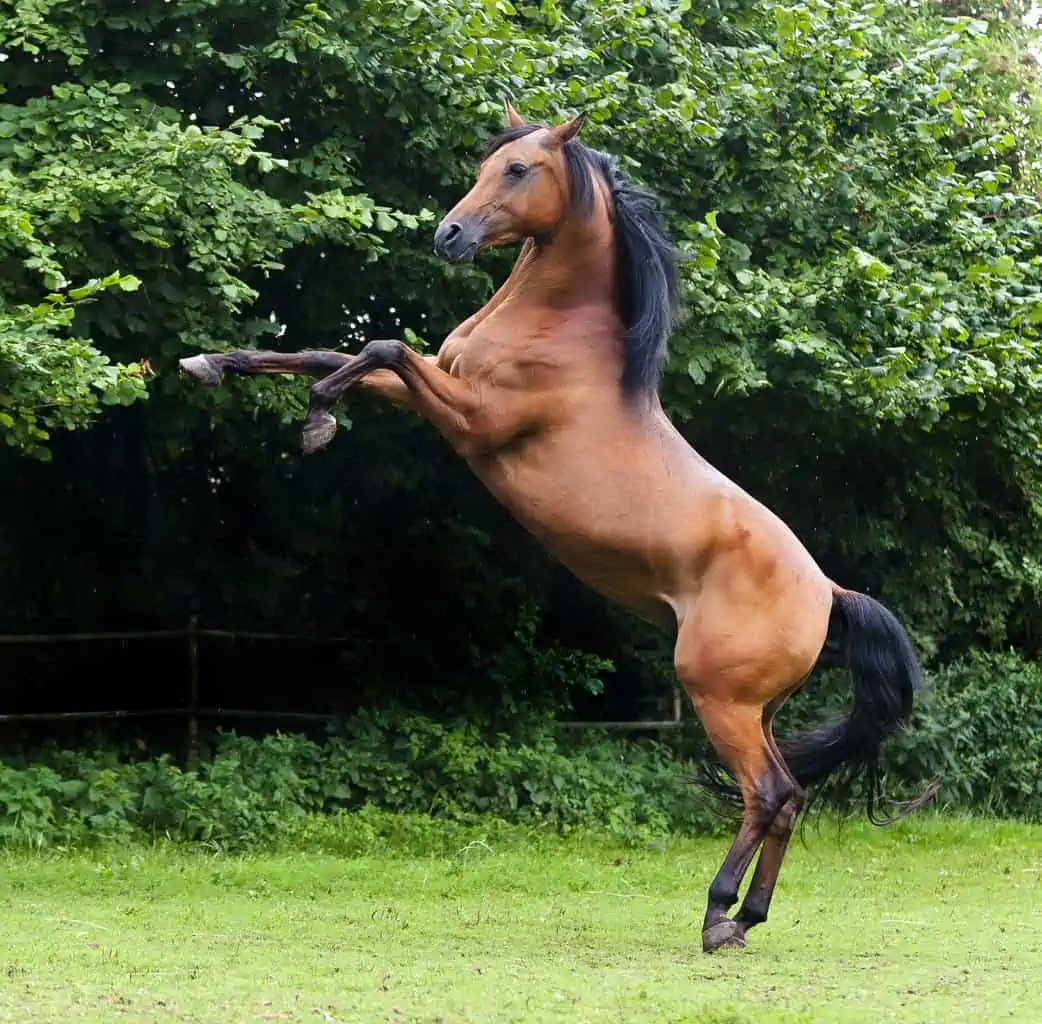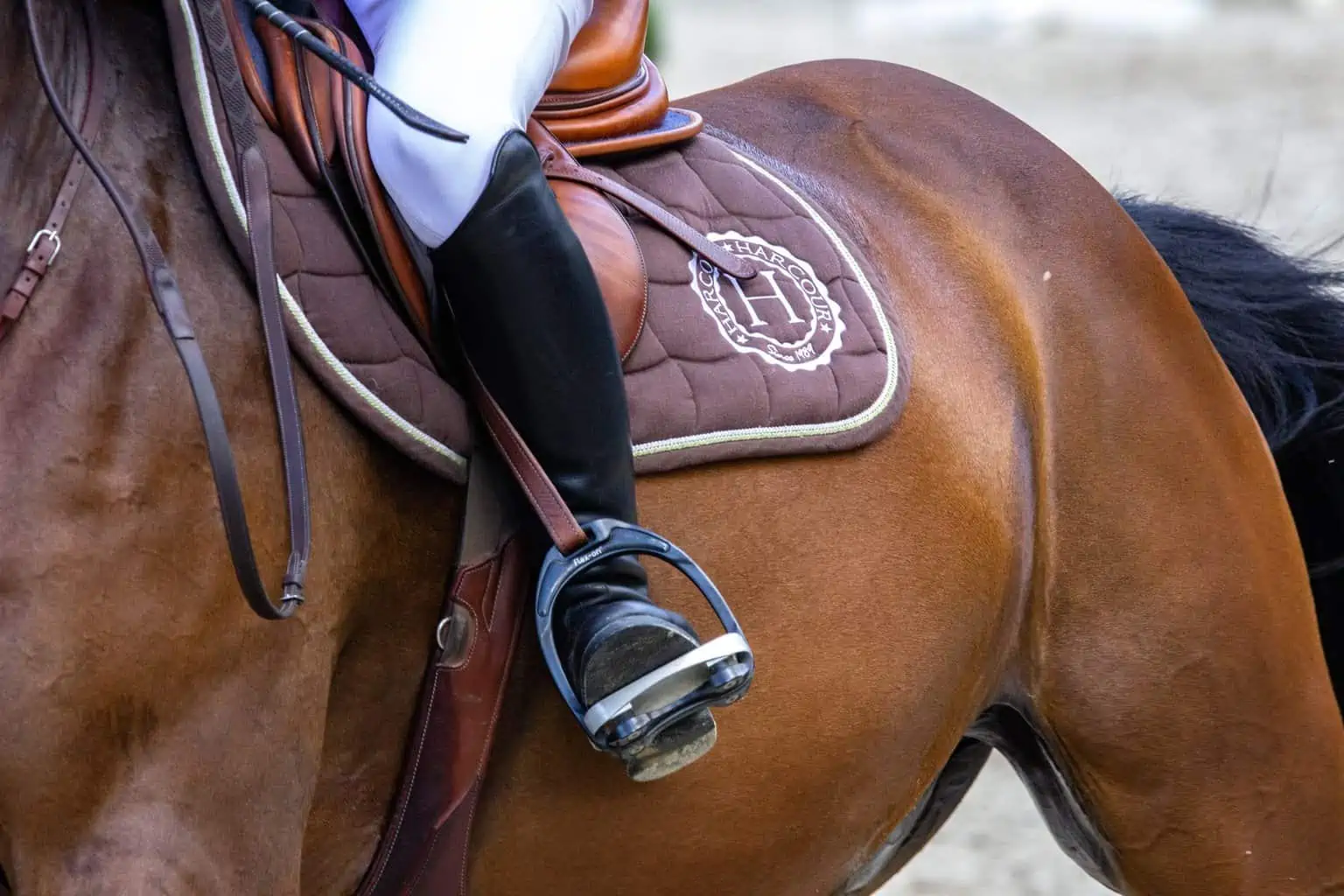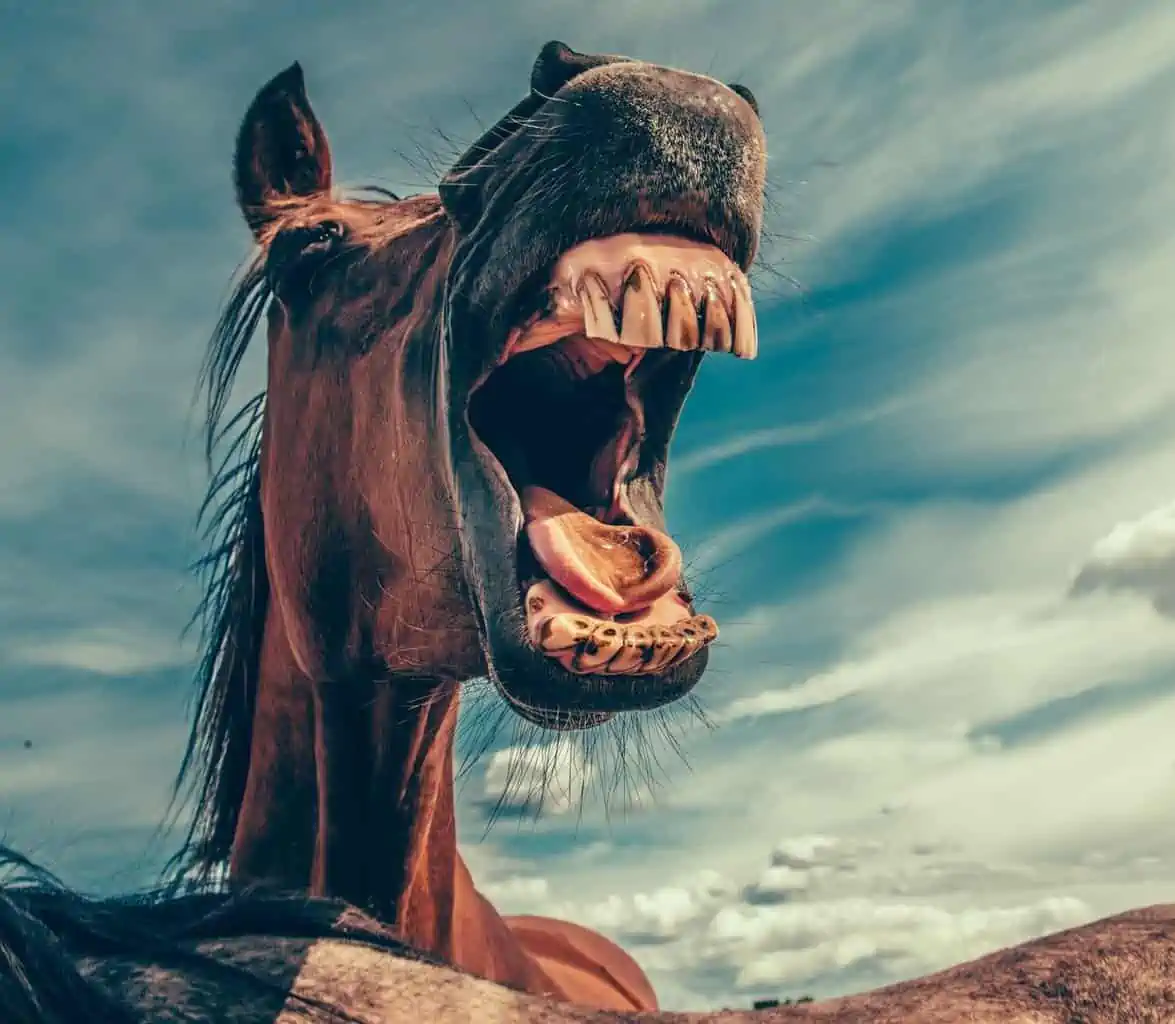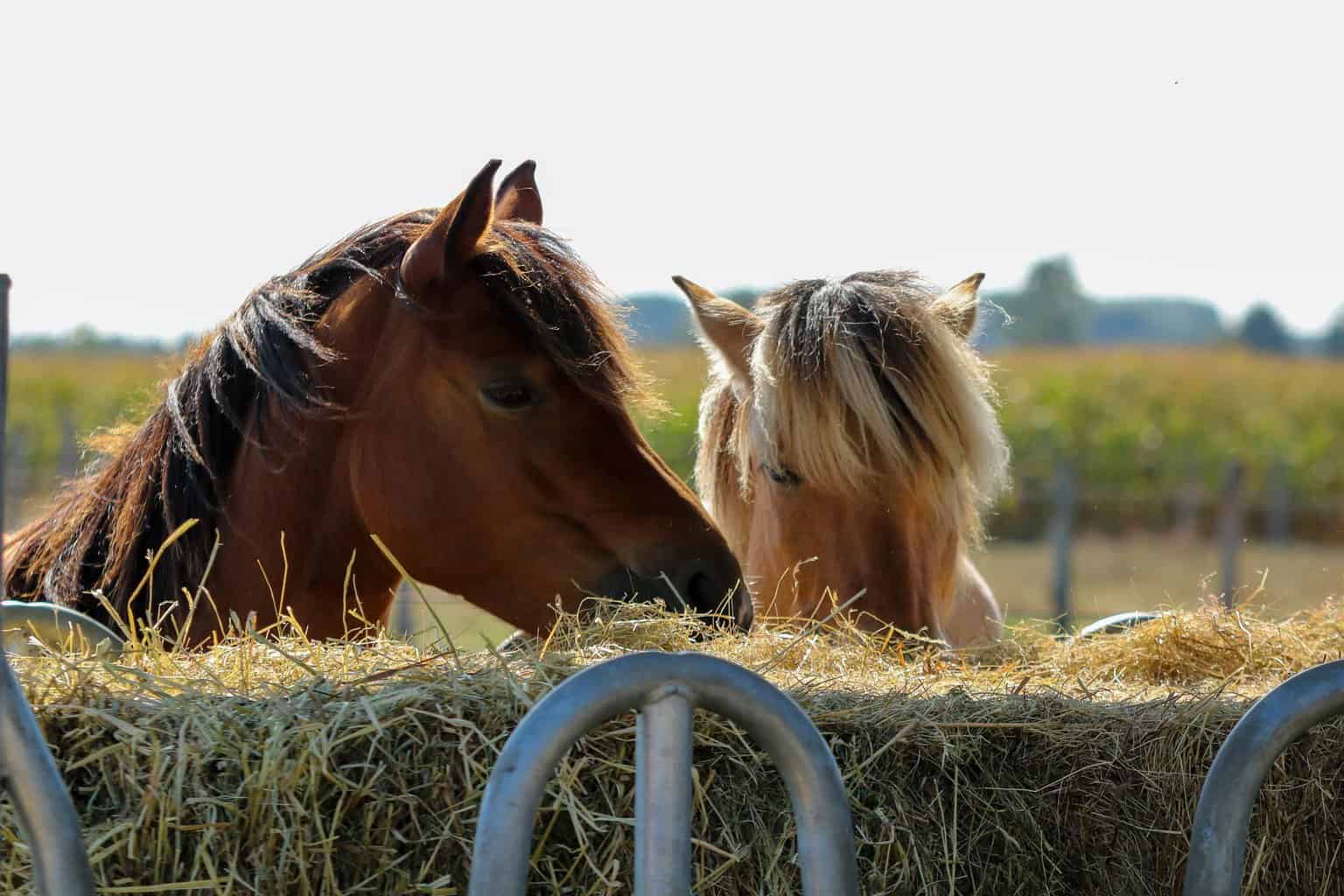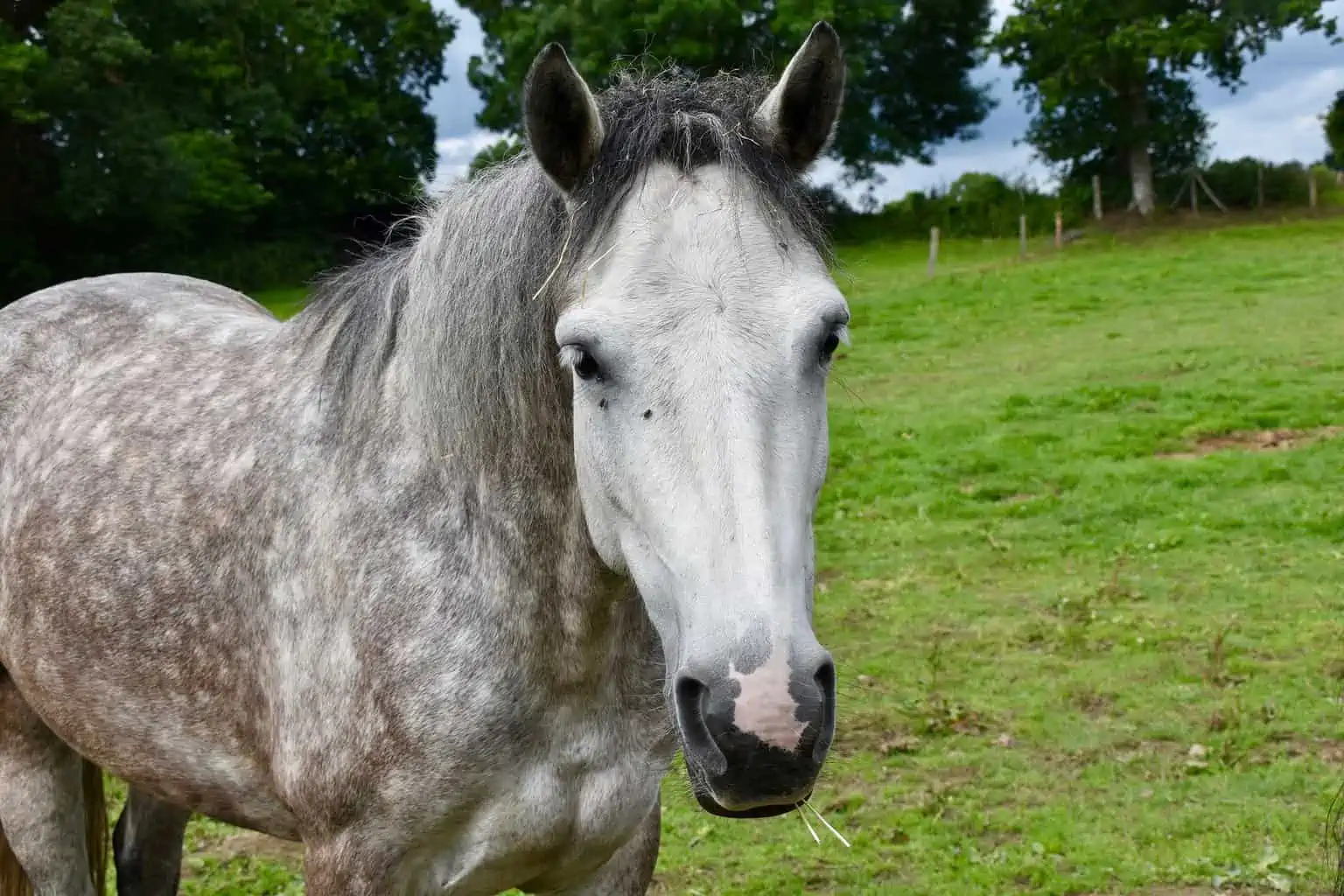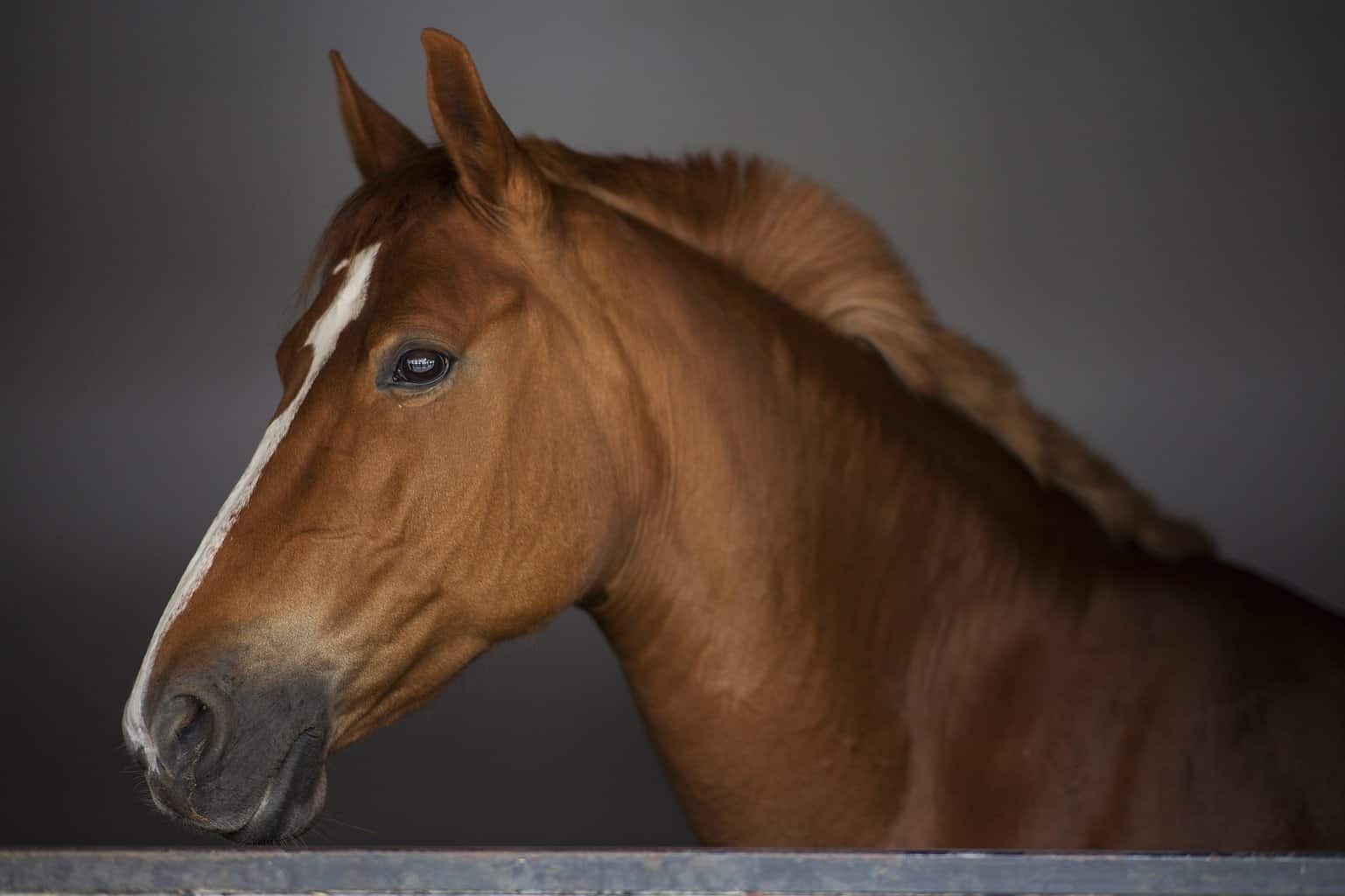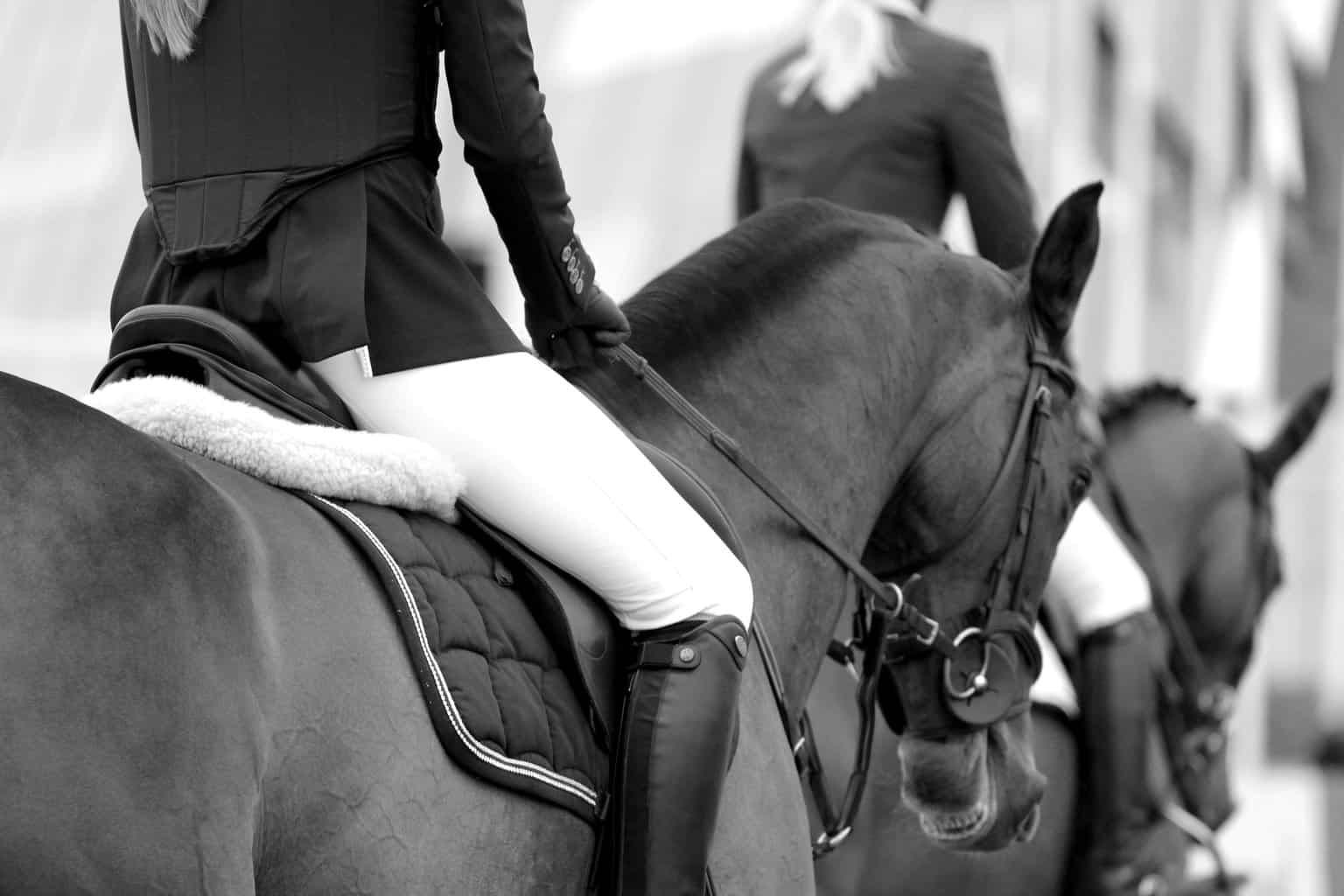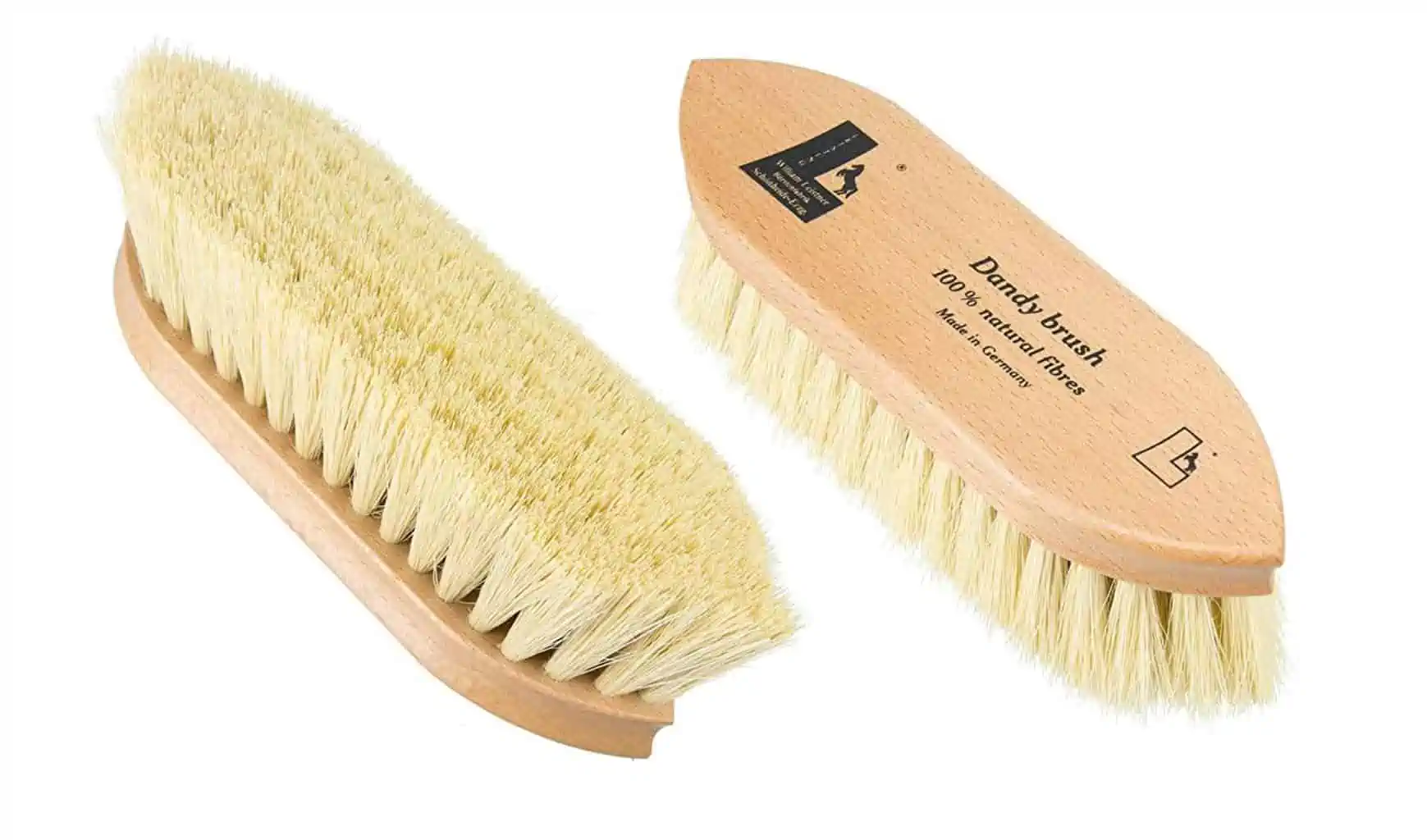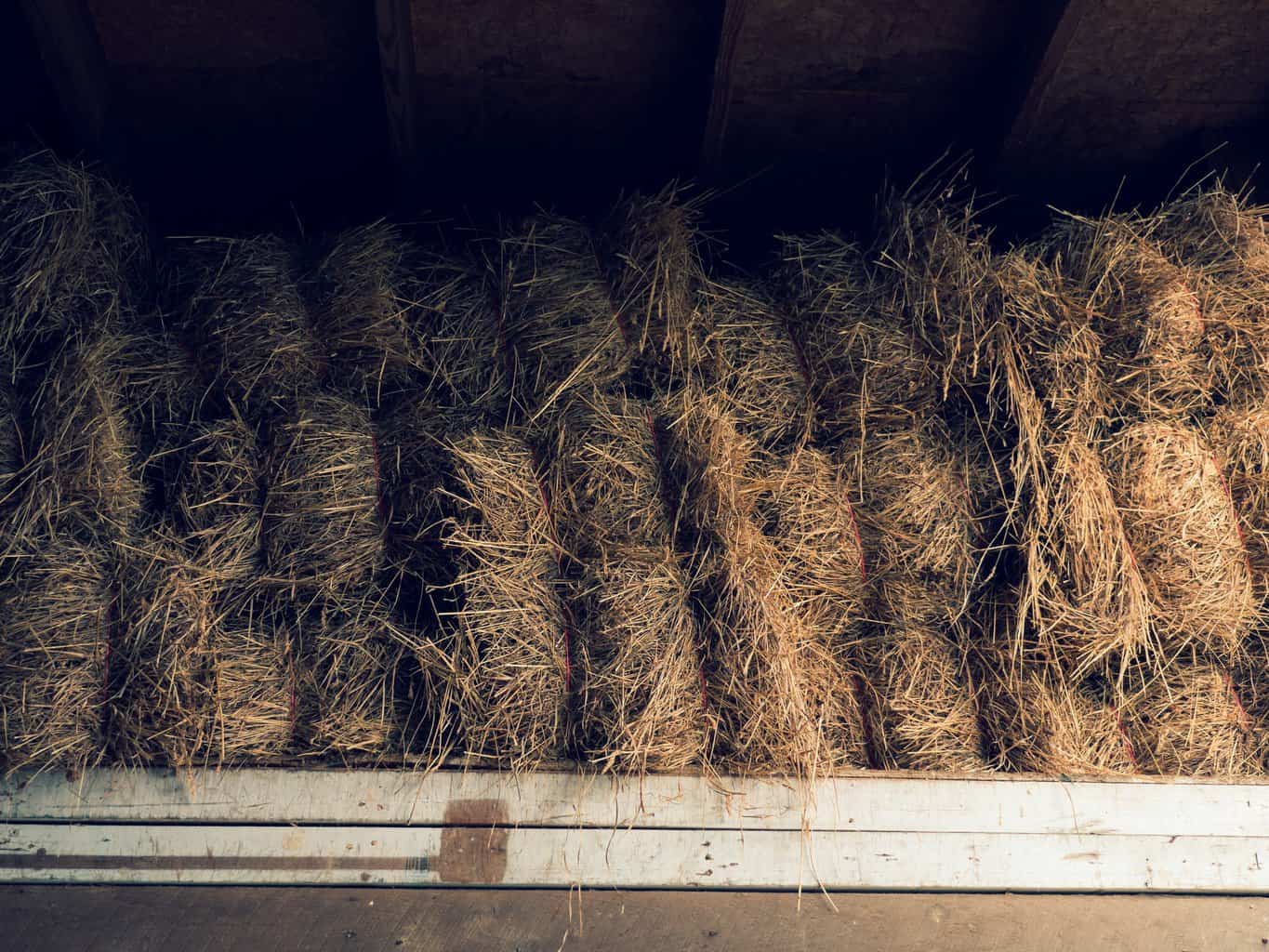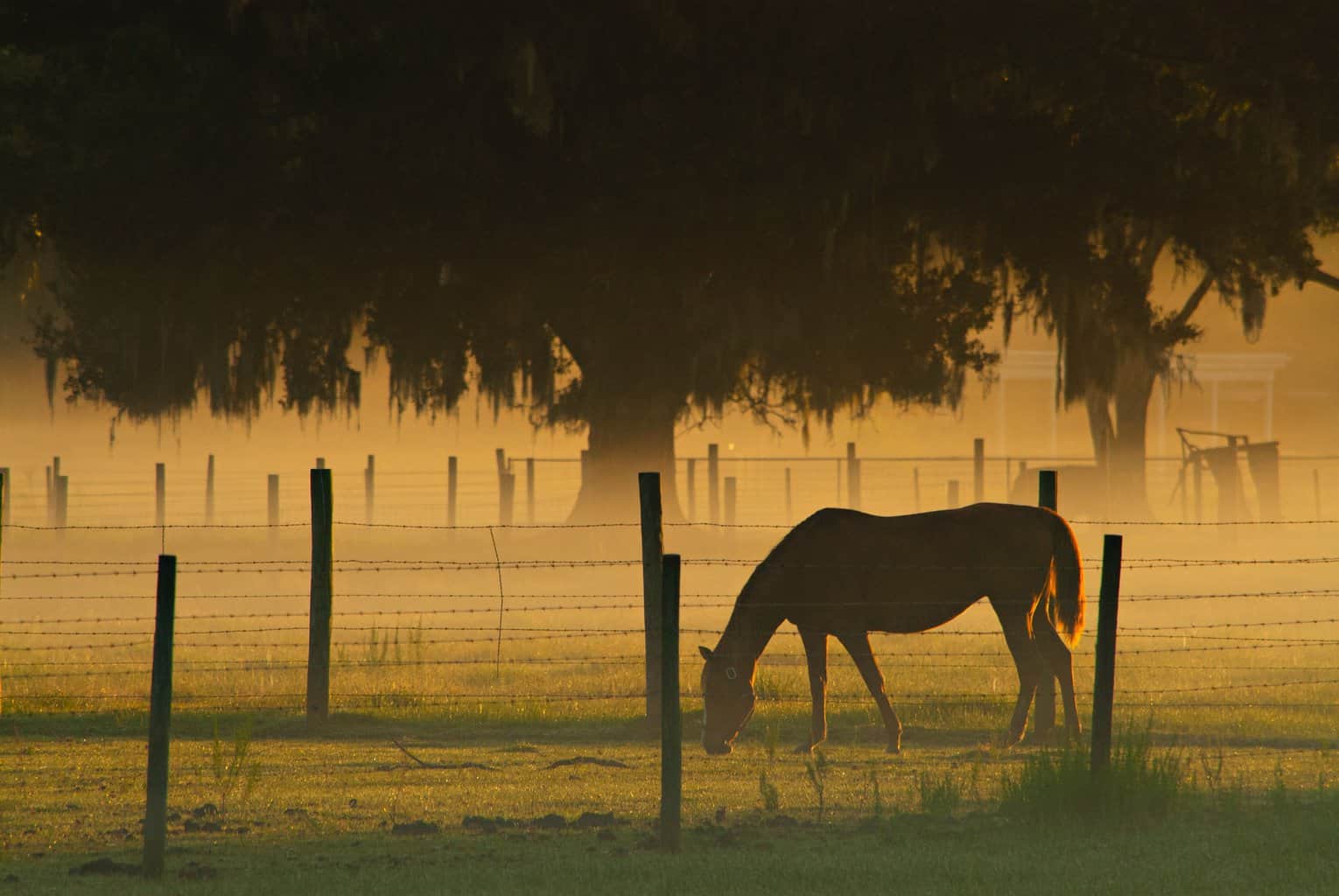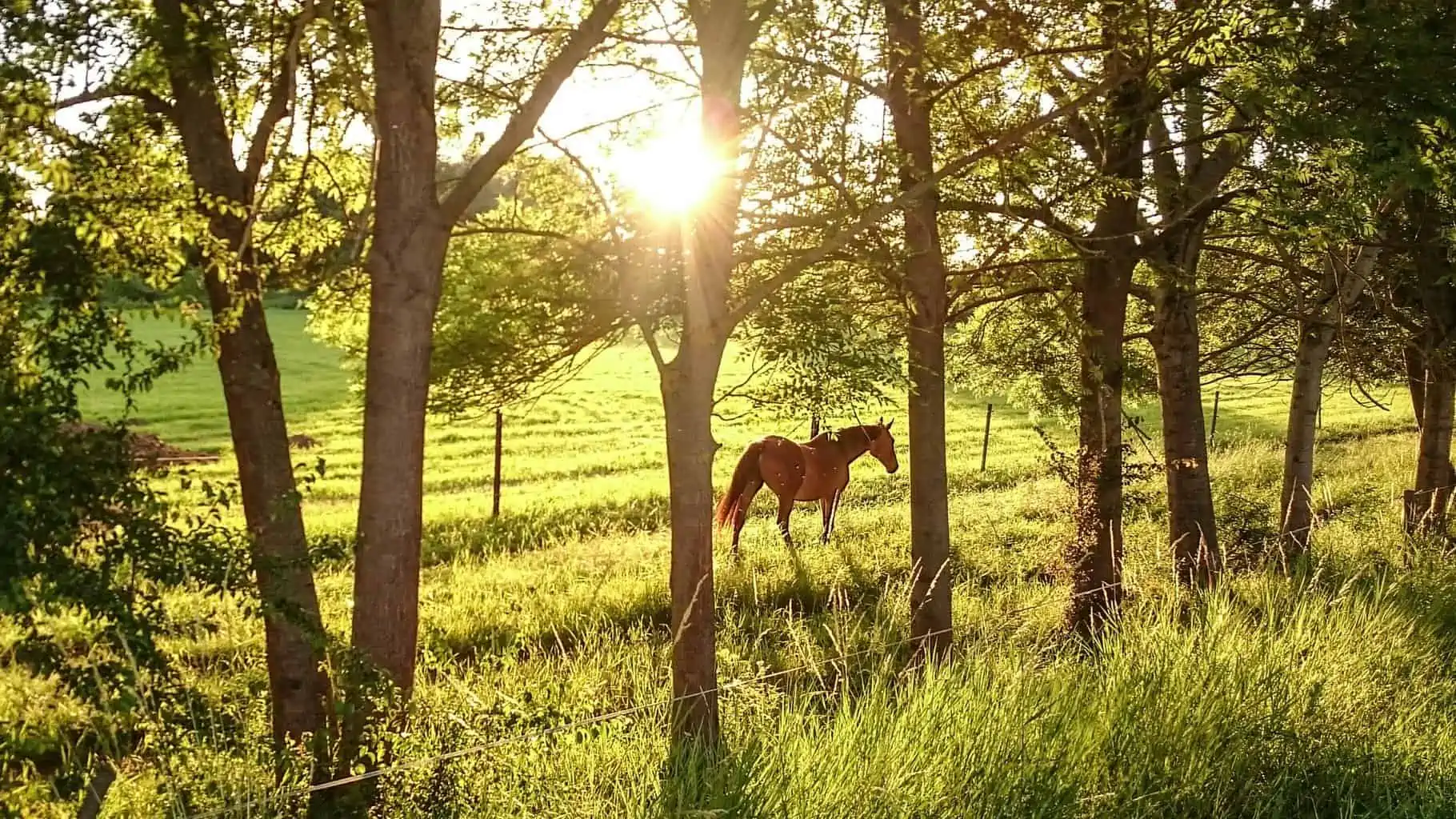- How Much Does a Bale of Hay Cost - August 15, 2023
- What is a Grade Horse: A Comprehensive Guide on Unknown Creatures of the Equestrian World - August 1, 2023
- Best Barrell Saddles - July 31, 2023
- Thoroughbred Horse Overview
- Thoroughbred: The Origin Story:
- How to Identify The Thoroughbred Horse:
- Thoroughbred Horse Lifespan
- Thoroughbred Horse Appearance and Varieties:
- The Thoroughbred Horse Human Interaction and Training
- How to Care for A Thoroughbred Horse
- Diet
- Cost of a Thoroughbred
- Where to buy a Thoroughbred Horse
- Breeding a Thoroughbred Horse
- Famous Thoroughbred Horses
- FAQs
Welcome Equestrian lovers – Have you ever wanted to learn about one of the fastest horse breeds in the world? Or are you just looking for another majestic breed to add to your stable? Well, you’re in luck because, in this Thoroughbred guide, I will be sharing everything there is to know about this breed and how you would go on to buy and care for it.
Thoroughbred! I have to admit, I have some pretty nostalgic memories when it comes to this horse. My equestrian journey started with a Thoroughbred and reached its climax while still on its back. I have not forgotten even a single memory I had with Breathing Pack, a Thoroughbred in our stable.
Our bond was something you might have seen in a movie, a relationship that was never dependent on any language. And now, penning my thoughts about my lost friend, with the Beethoven 9th Finale playing in the background, is something that I have never felt before.
An unforgettable memory with Breathing Pack on the Annual Function Day.
Let me recollect myself… OK, talking about Thoroughbred, it is one of the most majestic and intelligent horse breeds, making it a juggernaut and my absolute favorite amongst racehorses. And looking at its discrete pedigree, it is hard for me to call it anything but pureblood. Following are some of the facts you should know about the Thoroughbred, with some common traits it inherited from its ancestors:
Animal Family: Equidae
Country of Origin: England
Cross-origin: A cross between:
- Native English mares
- Imported Stallions: Arabian, Barb, and Turkoman
Height: 15-17 hands or 60 to 68 inches
Weight: 900 – 1100 pounds
Color: Bay, Black. Chestnut, Brown, White, Gray, etc.
Coat Quality: Shining straight thin short hair
Body Hair: Thick fluffy tail and a thin short mane
Temperament: High Spirit, Unruly
Lifespan: 23-28 years
Standard Job Titles: Race Horse, Trailing Horse, Show Jumping Horse, etc.
Breeding Standard Owner: The Thoroughbred Association
Thoroughbred Horse Overview
The Thoroughbred comes from the Equidae family, known for its countless contributions to uplifting human civilization. Some crucial contributions include their use in races and show events, a skill that has become their identity today.
Originated from England, the Thoroughbred was born through several attempts of crossing the native English mares in England and the imported Oriental stallions. It comes in around 16 hands tall and weighs about 900 to 1100 pounds.
Its breeding standards were officially formed in 1917 and are now regulated by a global association, the Thoroughbred Association. Since then, many colors have been added to its pedigree, with brown, grey, and chestnut being the most common.
Although it is mainly built for running, I also found it great for jumping and long events, thanks to its versatility and resilience.
A Better Alternative for US-based Thoroughbred Fans:
I also want to point out that, while The Thoroughbred Association is a worldwide organization, it mainly operates in the United Kingdom. So, I would suggest The Jockey Club, a US-based alternative to our American audience.
It offers 24/7 online support and extensive forums that can help an equestrian raise their horse by giving it the treatment it deserves. Its online portal is also a huge help. A person can also manage their horse’s digital certificate through an online account.
If you are an aspiring equestrian and plan to buy one majestic creature, I recommend checking out their website to get a better idea of the Thoroughbred world.
Thoroughbred: The Origin Story:
Although there have been many speculations around the matter. Most agree that today’s Thoroughbred horses can be traced to three leading stallions. The Darley Arabians, Godolphin Barb, and Byerly Turkoman. These three were brought to England in the early 16th century and were crossed with the native English mares. Making them the foundation of one of the fastest horse breeds today.
In the early 17th century, the breed was first imported to North America, from where its popularity grew exponentially. And by the end of the 18th century, it had already become a symbol of speed and agility worldwide. Today almost all the Thoroughbred horses are direct descendants of a stallion named Eclipse.
And as Eclipse is the great-great-grandson of Darley Barb, it makes Darley Arabian the most dominant thoroughbred bloodline among the three to this day. Today, it also influences many other horse breeds, including the Quarter Horse, The Morgan, The Irish, and many others in the modern world.
How to Identify The Thoroughbred Horse:
Throughout my equestrian journey, I was always posed one question: how do you know if it’s a Thoroughbred? Well, it’s pretty easy if you know what you’re looking for. So, in the following passages, I will not only guide you through the steps. But also inform you about some physical queues that helped me better identify the breed.
Coat
The coat is one of the easiest ways to identify a Thoroughbred horse. The first thing anyone can notice is its short, thin coat of hair, which can often be seen shining under the sunlight. While the flaxen marks on its forehead and lower legs are some other queues that help me identify the breed. I also recommend finding its short silky mane and long fluffy tail.
Build
It has a lean build and a deep chest, something it shares with its Arabian ancestors. And looking at its long legs and short back also helps me identify the breed. Its broad chest is another distinguishing feature that makes it easy for me to spot.
Breeding Standard
As it is mainly bred for speed and agility, there are different breeding standards for the Thoroughbred horse, varying from place to place. However, some traits are still a must-have for any Thoroughbred horse to be recognized in the Equidae community.
Amongst them, the unique traits of the breed include its well-chiseled head and its flat muscular form. Among them, its well-angled shoulders and powerful haunches are other features that make it easy to spot in a crowd.
Thoroughbred Horse Lifespan
A Thoroughbred horse has an average lifespan of around 23 to 28 years. Still, it can significantly outlive this given the proper care. A prime example of this is a racehorse named “Tango Duke,” who lived for 42 years and died on 25 January 1978.
Looking at their genetic makeup, it is true that the Thoroughbred horses should at least live till 25-26 years. But because of improper care and malnutrition, a tiny percentage of Thoroughbred horses go on to live that long, which is mostly our fault.
The lifespan of a Thoroughbred dramatically varies on the care it receives and how much you contribute to making the horse’s life more comfortable. Following this, here are some of my own suggestions that can drastically influence a better and longer lifespan for your Thoroughbred horse:
Good Dental Hygiene
Because the diet of a Thoroughbred horse wholly consists of cellulose-rich grass and hay, the dental hygiene amongst the breed has never been excellent. Constant grazing and frequent meals also don’t help as it contributes to further breaking the enamel on the teeth. This can lead to irregular tooth structures, which can be pretty painful for the horse and discourage the horse from eating and thus losing weight.
I recommend booking your Thoroughbred horse for quarterly appointments. Having done the same for my horse helped me stop many minor issues that could have led to more significant problems down the line.
Keeping Low Body Temperature
Due to the standard workload of a Thoroughbred horse and its warm-blooded nature, the breed tends to get hot during summers. And so, the species does require external help to maintain its body temperature. I recommend providing your horse with proper shade and keeping it somewhere with adequate ventilation.
I avoid taking them out during hot summer days and do not even ride them for more than twenty minutes without a break. Doing this allows me to keep their body temperature lower, saving them from heatstroke. Studies also show that these measures can radically help reduce the chances of dehydration and muscle spasms and thus influence a more comfortable lifestyle for your horse.
Knowing Your Horse’s Bloodline
Learning about your Thorough breed horse bloodline can significantly impact how you treat it. The Thoroughbred horse is famous for being pureblood. Still, unfortunately, it also increases its chances of inheriting a genetic problem from its bloodline.
Knowing about a potentially genetic problem my horse may have inherited greatly helped me form better grooming decisions and plan a proper diet for it. This plays an essential factor in maintaining a healthy breed, influencing a longer lifespan.
Giving The Right Amount of Feed
Having a stable and suitable diet for the horse is also very helpful and significantly affects its lifespan. Due to Thoroughbred’s racing genes, they tend to eat more, and thus their bodies are adapted to consume large amounts of feed and produce.
Giving my horse controlled and frequent meals helped it maintain its muscle mass while keeping it healthy and energetic.
Thoroughbred Horse Appearance and Varieties:
It features a sizeable symmetrical head and a relatively slim body that helps it run with incredible speeds and elegance.
And thanks to its long legs and hooves, it is also somewhat longer than most horse breeds. And If that wasn’t enough, an even slope along its waist and deep sloping shoulder are some more traits that make it perfect for running, making it one of my favorite horse breeds.
Different Coats Amongst the Thoroughbred Horse:
Today the Thoroughbred horse is available in almost all colors ranging from brown, black, chestnut, and even white.
While most of them feature a solid color around the body, some coats are also classified under different variations and thus given distinct names. Following are some of these unique colors together with some of their differentiating characters:
Dapple Grey
This color of the Thoroughbred is primarily grey, with small spots of white spattered in a rather abstract way along with the coat. These are mainly used in races and speed events rather than show events as some find their color unpleasing. But despite what others think, it still comes from the same bloodline, making it a winner in my books.
Blood Bay
Blood Bay is an exclusive coat in Thoroughbred, which is very rare due to its unique mixture of colors. People often see it as a darker shade of red, while to me, it looks like a mixture between yellow and chestnut. This Blood Bay skin on Thoroughbred is mainly seen in show events and modelling, as equestrian lovers prefer it due to its simple but majestic shine.
Not to mention, this elegant coat was what made me fall in love with Breathing Pack.
Brindle
Despite being a rare color in the bread, Brindle is still one of the most famous Thoroughbred coats. Its rare jacket is mainly attributed to genetics.
And is often linked with a patchy color pattern resulting in an unusual texture in Thoroughbreds. The Brindle color Thoroughbred horse is chiefly used for riding, while I have also seen it used in show events and extended tours.
Seal Brown
This is one of the most common coats seen on a Thoroughbred. A mix of black and brown characterizes the coat with no unusual marks or patterns.
The color also signifies Thoroughbred’s primary purpose of being a racehorse. And its majestic shine also helped instill its undying glory in my mind. I have often seen the Seal Brown Thoroughbreds running on the race field where it shines the best.
This color might feel black from a far distance, but it reflects its brownish tint with each step you take closer to this horse. Isn’t it mesmerizing!
The Thoroughbred Horse Human Interaction and Training
The Thoroughbred comes from a bloodline of famous race breeds, which has invertedly influenced the species’ more proud and unruly attitude. The Thoroughbred is renowned for being stubborn at times, but this can be mostly negated through proper training. The Thoroughbred also features a rather dominating personality which can be tricky to control for inexperienced riders.
To counter this, I recommend posing a more composed behavior around the breed as it can widely help you control its otherwise unruly demeanor.
My experience with the specie also taught me that the Thoroughbred can also be very playful and loving if you give it proper care and grooming. You would forget everything I have said earlier about its demeanor and fall in love with it if you give it your love and time.
With the proper handling, the Thoroughbred can present itself as very calm, allowing for it’s successful career as a racehorse. However, keep in mind the Thoroughbred has a rather proud personality that doesn’t work well with rough riders. It tends to not listen if you display a controlling attitude; instead, try to be more gentle and patient with it, and it will come around. As they say, Kill them with kindness.
The Thoroughbred is a versatile creature. It can easily be used for horse riding and works well with cattle grazing. Due to its strong nerves, it also doesn’t get startled by sudden actions. However, it would be good to supervise it around small animals and kids, as it can easily knock out even grown adults due to its size.
It also proves itself territorial around its food. And it can be very protective of its partner, so I recommend you not to poke your nose when they are close to each other. They have a right to privacy, after all!
Suppose you plan to use the Thoroughbred for racing events. In that case, I recommend taking it out on natural runs rather than training machines. This not only helps the horse form a connection with the rider. But I have also seen it help tame its unruly attitude.
How to Care for A Thoroughbred Horse
While taking care of a Thoroughbred, you will have a fair bit of work cut out for yourself, including grooming and careful diet control. Taking care of it can be a daunting task.
And this, unfortunately, discourages many newcomers from owning a Thoroughbred despite its majestic status. But don’t forget, it does have its plus points; caring for a Thoroughbred can be very fulfilling. Here are some things to keep in mind while caring for a Thoroughbred horse:
Grooming
Thoroughbred horses are relatively easy to groom and clean. Most require regular brushing after a long day of running, while some can need extra attention depending on the activities. The first thing I recommend is cleaning their hoofs from hay or mud; this helps you assess the hoof’s condition and allows you to check if a shoe is missing.
I also recommend riders brush the horse’s coat every day, especially after long sessions, helping remove small shaving out of its hair. Moreover, try to be gentle with the process not to damage the Thoroughbred’s relatively thin skin. This should also be done for its mane and tail, preventing tiny knots from forming. A Dandy Brush is perfect for this application.
Feed
The Thoroughbred horse is seen as one of the most energetic and lively horse breeds in the Equidae family. Therefore, it’s not surprising that it eats hay almost 24 hours a day. Its digestive tract is mainly made for quick digestion, which results in its defecating several times a day.
So, I recommend feeding your Thoroughbred with at least 15-20 lb of hay and 10 gallons of water daily to maintain a constant body mass.
Studies also show that giving your racehorse the right proportion of Concentrate to Hay is also very important. The portions often depend on their age, but in my experience, full-grown Thoroughbreds do not need much proportion of Concentrate as their younger counterparts.
Building and Maintaining its Pen
Considering Thoroughbreds’ large size, I recommend a 70-75 feet pen with a relatively tall and robust fence. But you can ignore that if you don’t mind it freely roaming around your stable. Also, try to provide a clean environment for your horse. Studies show that proving a large and clean pen can positively affect its mental mood.
I also recommend having a separate section built inside the pen for the rainy season. It helps prevent the horse from getting wet and provides shade on sunny days. An enclosure large enough for your horse to freely sit and roll around inside it should be OK. I also advise that the section be supplied with clean hay throughout the day.
Common Health Problems and Their Preventions
- Exercise-Induced Pulmonary Hemorrhage (EIPH): This is a common health problem among Thoroughbred horses and is characterized by bleeding from the lungs. EIPH is mainly linked to extensive exercise in horses but can also be caused by age or lifestyle. To prevent the issue, avoid it from constant training and give it short breaks between runs.
- Damaged and Disformed Hooves: This is a common issue amongst racehorses and can result in irregular shapes amongst the hooves of a Thoroughbred. This can be pretty painful for your horse and can easily be avoided through proper trimming and cleaning of the feet.
- High-Stress: Another common problem with the Thoroughbred is High stress. Which can lead to weight loss and even gastric ulcers, significantly affecting its ability to run. If you experience this in your Thoroughbred, I recommend you reduce its training and allow it to rest.
Diet
The Thoroughbred horse’s diet mainly consists of high energetic food and snacks, which helps the breed through its active lifestyle. Due to its fast metabolism, I recommend feeding it in small and frequent amounts, which allows it to better digest its food and get the most nutrition.
The breed prefers fibrous hay and fresh grass, while whole grains and oats can also be an excellent addition to its diet. I also recommend adding Alfalfa hay, but in minute amounts, as its high glucose level can lead to Gastric ulcers for the breed. But Overall, the diet of a Thoroughbred can drastically vary depending on its use and age.
Fats and oil in its diet are also a good idea before races. It slows down lactate formation inside the muscles, thus helping them run for longer distances. But it can lead to gastric problems through frequent use. Amino acids are another essential part of a Thoroughbred diet.
And I recommend adding it in the form of beans. You can also add supplements and vitamins to their diet. Still, I advise you to refrain from it until you know the exact genetics of your Thoroughbred.
Cost of a Thoroughbred
Finally, the moment you have been waiting for, the cost of ownership of this heavenly breed. However, always keep in mind Thoroughbred’s application as a racehorse and its massive popularity amongst the horse racing community. You can spend anywhere from $100,000 to $200,000 on it.
The price can also drastically depend on its training and how many races it has won during its career if we are talking about a racehorse. With several wins under its saddle, a well-trained Thoroughbred horse can easily set you back 300,000 dollars. But this is not even close to the $70 million paid for a Thoroughbred named Fusaichi Pegasus.
Where to buy a Thoroughbred Horse
Buying a Thoroughbred is easier said than done due to its massive popularity. While it’s true that many stables around the state deal in the Thoroughbred horse, these horses are primarily sold in auctions and events. Where trying to secure one can be relatively complex.
Suppose you are seriously interested in buying one. In that case, I recommend having a good investment ready and then visiting several horse auctions around the state.
There are some online websites (ehorse.com, equinenow.com, horseclicks.com, etc.) that deal in these horses. However, in my personal experience, if you are looking for a good Thoroughbred, its love at first sight. So, I would refrain from making any online references, in this specific case of Thoroughbred.
Breeding a Thoroughbred Horse
If you are good with extensive care and have experience with foals, breeding a Thoroughbred for yourself can also be a great way of obtaining a perfect Thoroughbred. And reiterating, the main factor to remember in Thoroughbred breeding is genetics, which can drastically change a racehorse’s performance. But I would advise you to make sure the sire and the dam are purebloods If you wish to have a good performing racehorse.
Honestly, when it comes to Thoroughbreds breeding inside the State, I was pleased with the check and support of the JockeyClub. They deeply involve themselves in educating new breeders about the specifics of breeding and help them make the right decisions when working with this breed.
The most popular way I have seen people breeding Thoroughbreds is by renting a suitable stallion, stud, for their mare. This can be a lot cheaper than owning a stallion yourself.
Famous Thoroughbred Horses
Following Thoroughbred horse’s extensive history, many are still remembered due to their accomplishments in the equine world.
- Messenger: Born in 1780, it was a foundation sire of its era. It is also known for producing many great stallions that never ceased to amaze us with their trotting abilities.
- Man o’ War: Man o’ War, regarded by many, is considered the best racehorse of the 20th Man o’ War was well renowned for winning 20 out of 21 races in his career but had a relatively short career of only two seasons.
- The Green Monkey: was an American Thoroughbred known for its record-breaking auction price of $16 million; after Fusaichi, of course.
FAQs
Answer: Put it into simple words; they are good with several things but not beginners. They display a proud and unruly attitude that an inexperienced rider can’t tame. I would never suggest an equestrian newbie try his luck with an untrained Thoroughbred.
Answer: As the name suggests, the Thoroughbred was bred “through” hundreds of years, indicating a “thorough” process. Due to this, people started to call it the Thoroughbred horse.
Answer: The cost of a Thoroughbred is mainly high due to its extensive and successful racing career. Throughout the century, the Thoroughbred has proved itself a champion breed in the sport, making it a default breed for professional horse racers. And being a pureblood, it is also rather hard to breed, further increasing its price.


